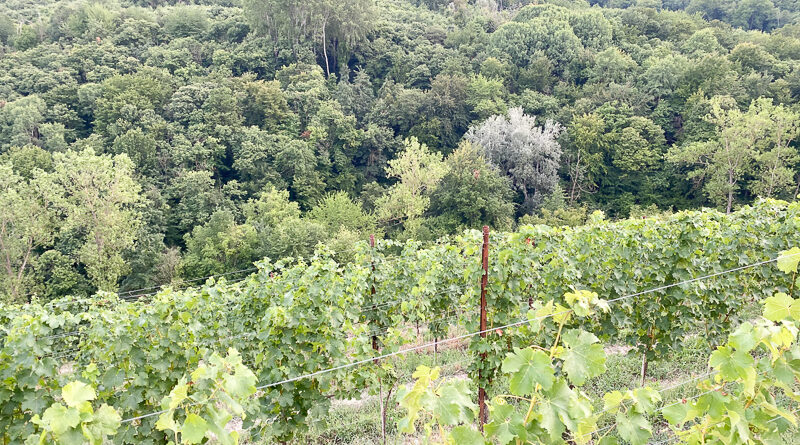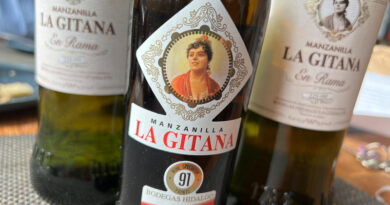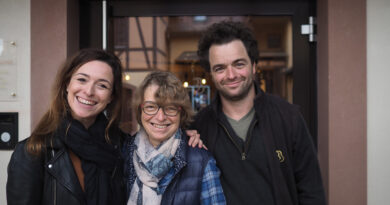Visiting Gaja, one of Piedmont’s top producers, and seeing the new Alta Langa vineyards
Barbaresco is a small town, and it is pretty much dominated by one producer, Gaja, who put this Piedmont appellation on the world map. This was my first visit to Barbaresco, and I met with Giovanni Gaja, one of the fifth generation of the family along with sisters Gaia and Rossana. Giovanni is the youngest of the three, and began working with the family firm just three years ago.
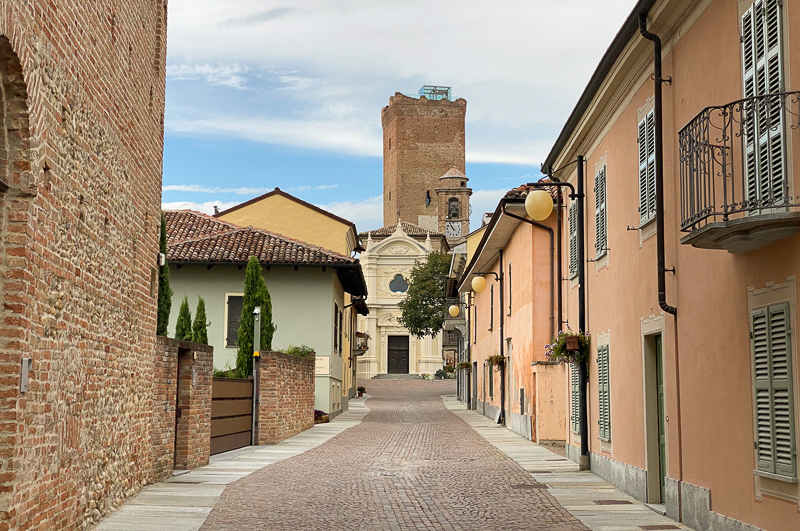
Giovanni, his grandfather, built the brand in Italy. Then Anjelo, his father, began selling the wines abroad. ‘It was hard for him,’ says Giovanni, ‘because young Barbaresco was a hard wine then, and no one knew them.’ One of the things that Anjelo did was to plant international varieties: Cabernet Sauvignon, Chardonnay and Sauvignon Blanc. ‘My father has always been taking controversial directions, and he has always believed in his territory,’ says Giovanni. He was the first to plant Cabernet Sauvignon, Chardonnay and Sauvignon Blanc in the late 1970s and early 1980s. ‘These are three varieties that are able to age,’ he says. Planting international varieties was a way to introduce the region and winery to people. ‘It was a way to get them more curious about this area, and the wines from this area.’
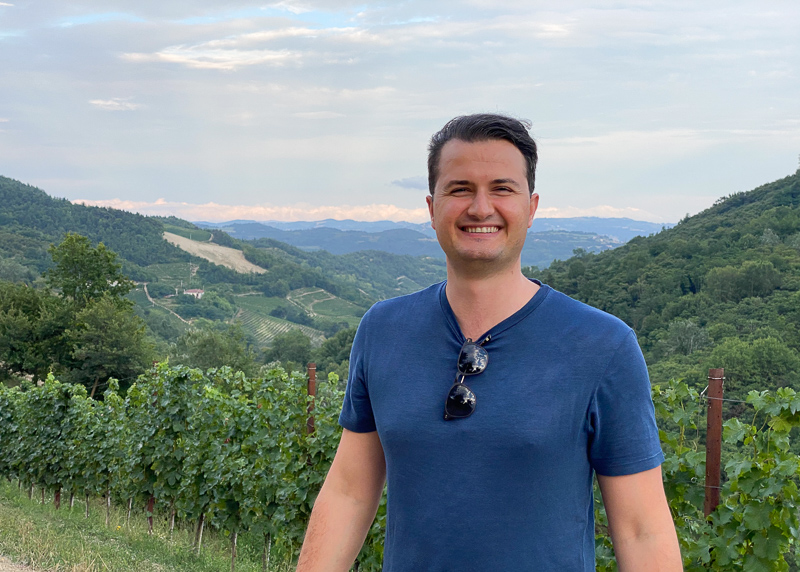
Angelo has just turned 81, and is still very much involved in the business, and Giovanni says that he comes in 8 am, and leaves 8 pm. And the expansion of Gaja continues.

In Sicily, Gaja started a new project with Alberto Graci, which is called Idda. When Angelo Gaja and Alberto Graci met for the first time in 2017, ‘it was love at first sight, a sharing of beliefs and values,’ says Giovanni. ‘The project is a challenge for both of us.’ Gaja bought vineyards on the South West slope of Etna. ‘We think there’s good potential here for the whites, so this will mainly be based on Carricante.’ They bought 40 hectares in 2017, 14 planted with Nerello Mascalese, and 1 ha planted with Carricante. They have planted another 12 hectares of Carricante over the last three years.
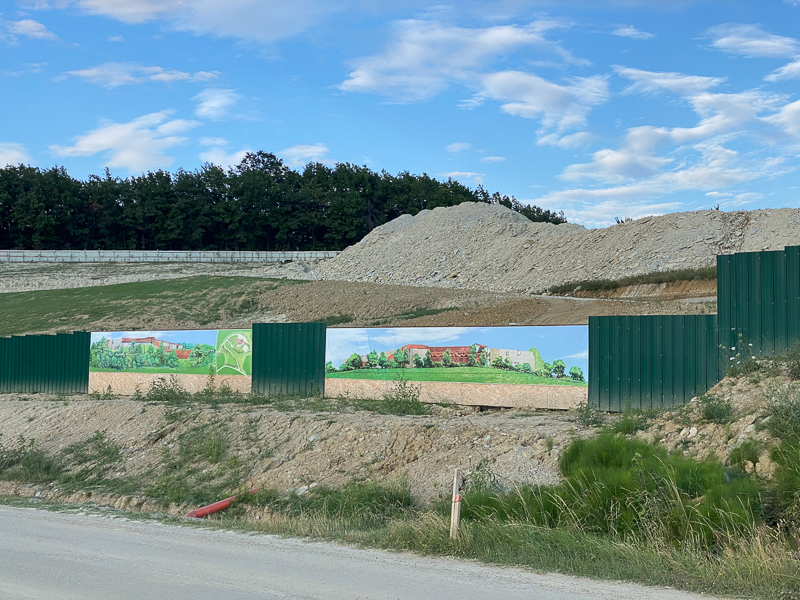
The new winery under construction 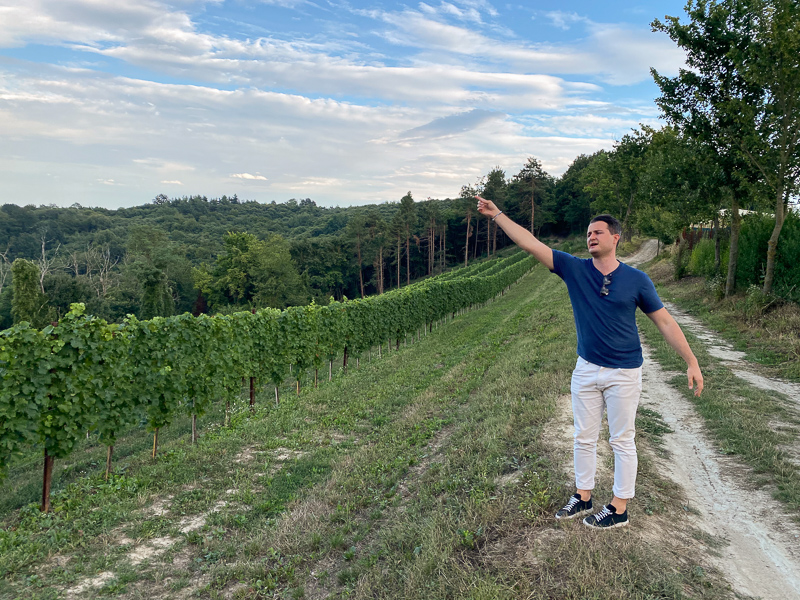
Alta Langa 
The soils here 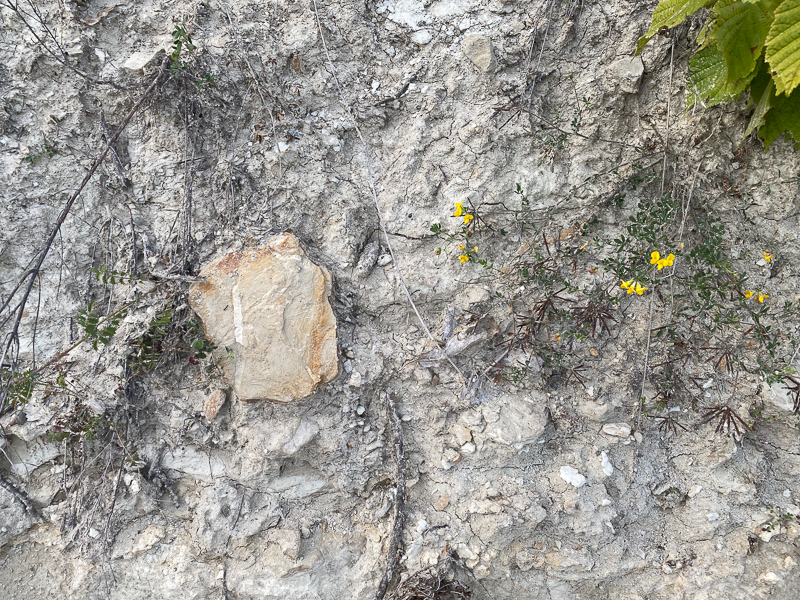
But perhaps the most interesting project is one in Piemonte, which Giovanni took us to see. It is in the Alta Langa. This region extends south of the Langhe and goes almost to the sea and the border with Liguria, and is six or seven times bigger than the Langhe. Altituse is 500-800 m altitude, and there is less limestone in the soils, which are more sand, compacted sand and clay. ‘It was difficult to plant before because it was too cold,’ says Giovanni. ‘But now things are changing. It is becoming known for sparkling wine.’
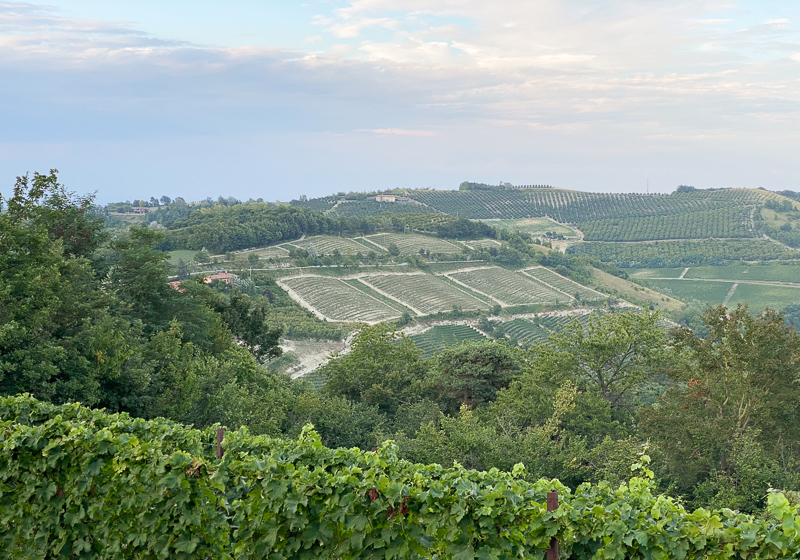
Gaja are interested in making still wines here, mostly white. They are building a big winery, which is a real statement of intent. ‘My father is a visionary,’ says Giovanni. ‘Eeven in Bolgheri [where Gaja have a vineyard project], the winery was running for a long time at one third capacity, but now it is full up. Gaja bought 30 hectares in the Alta Langa in 2015, which at the time was planted with hazelnuts. They let the soil rest for three years, and then planted. The first (tiny) vintage was 2019, but as yet no wines have been released.
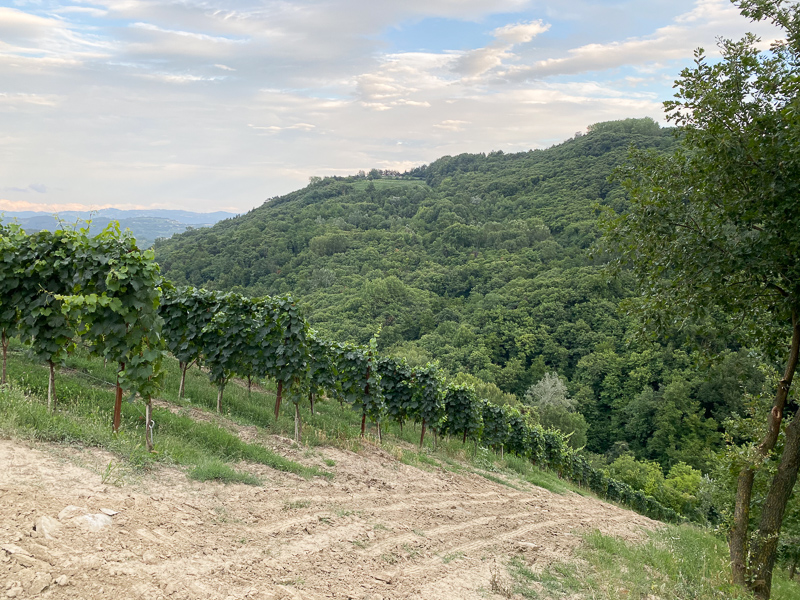

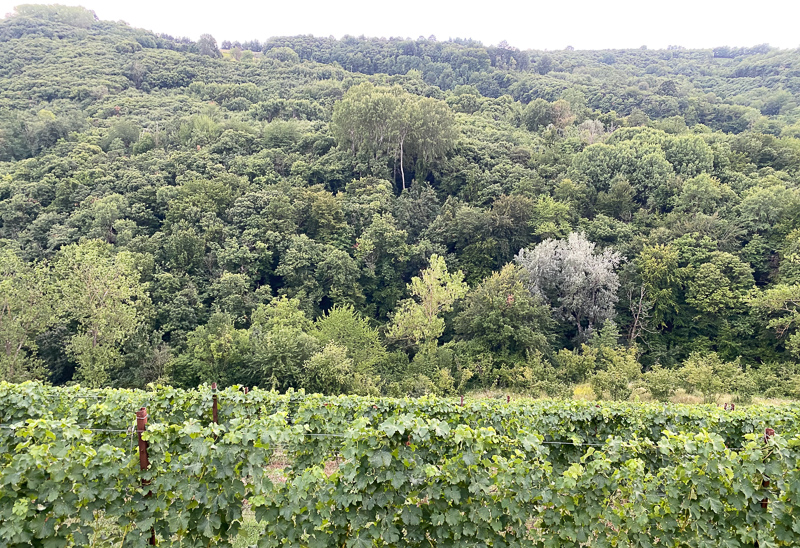
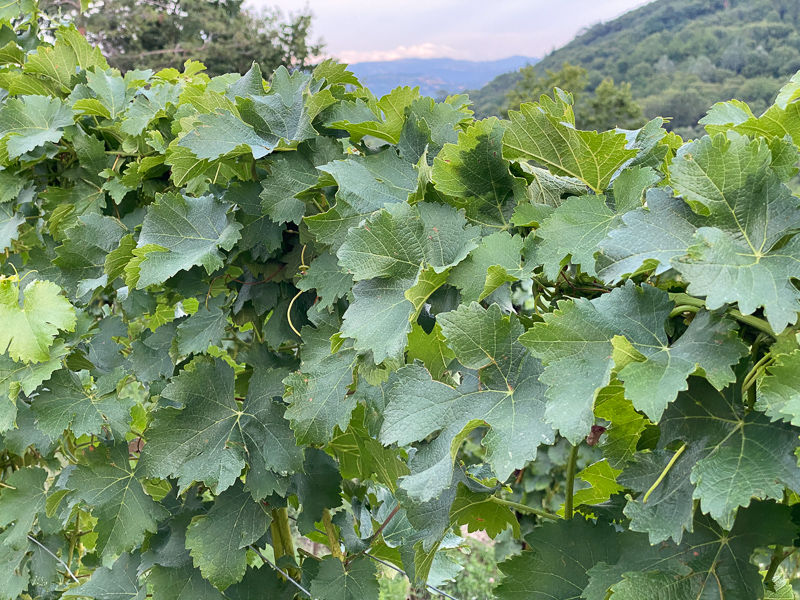
‘Climate change has been one of the big challenges over the last 25 years,’ he says. ‘In terms of vineyard management, it has been a complete revolution. We have to preserve acidity and contain alcohol. If you pick the wrong time you are unripe or overripe. We now pick much earlier than in the past.’
‘We started focusing on bringing life into the vineyards. The vines grow happier: we grow an ecosystem around them. Each year we make 70 tons of compost, buying cow manure from dairy cows.’ They have introduced Californian red worms who then eat this manure and process it, and then it is spread it into the vineyards.
Gaja have also started working with consultants, but not wine people: rather, they have hired professors from the university who are entomologists and geneticists, and experts in other disciplines. ‘Climate change stresses all the excesses,’ says Giovanni. ‘There is drought and also intense rain. Everything is more intense. Spring frosts are more common: they come almost every year. Parasites are becoming much more aggressive, so instead of one generation of vine moths we have three or four. The entomologists have been teaching us ways of fighting pests without using chemicals, or using fewer chemicals.’
Each year they release thousands of insects into the vineyard. One is a natural predator of scale insects, and another parasitises the female scale insects, laying eggs inside them. The idea is to recreate the balance in the vineyards. They have reintroduced flowers to attract pollinating insects, such as physelia. Bees are used as biological sentinels.
‘The biggest evolution has been cover crops,’ he says. ‘40 years ago there was a different concept: as soon as you saw grass growing you would cut it. Today we realise that grass is an important ally. We seed legumes in vineyards that need more energy, such as fava beans or vetch. They fix nitrogen. In soils with too much energy we plant cereals, and then in May/June we either press them to the soils or cut them. In a cold wet vintage we cut them, but in warm vintage we press them and it creates a thermic blanket that keeps the humidity. We learned this through mistakes. They protect against erosion and they also aerate the soils.’
‘The main goal of working this way is not to make better wines. It is to gain resilience: to have vines that are less dependent on us.’
‘With climate change it has become important to understand the vintage more. Many of these wines won’t age for 60 years, but maybe 20. But other current vintages might. You have to understand the vintage.’
In 2003 they started making a nursery of Nebbiolo. ‘It is not based on the healthiest plants. We are looking for plants that are healthy but which had issues in the past. These plants are resilient.’
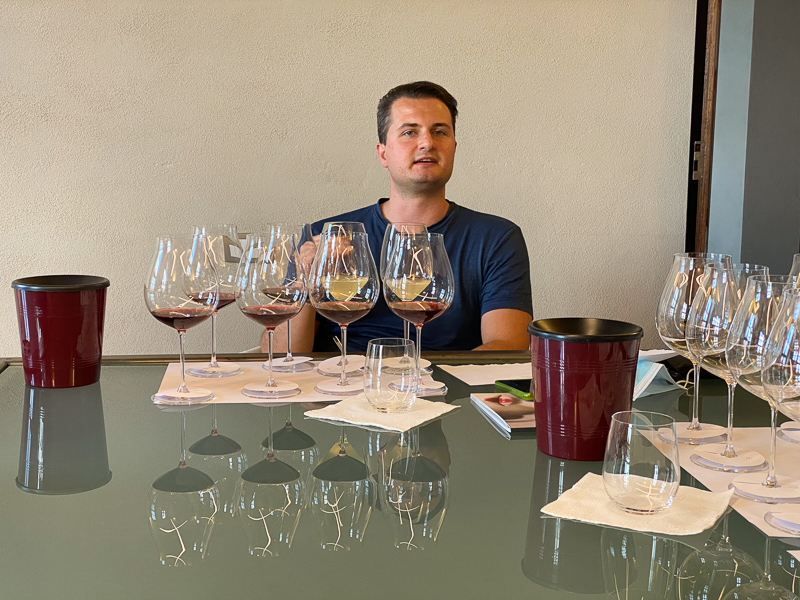
We then tasted through some cask samples (mostly 2020, which was a beautiful vintage in the region), but also 2018.
Gaja Alteni di Brassica 2020 Langhe, Italy
Sauvignon Blanc from Barbaresco (first vineyard 1983) and Serralunga (this was bought in 1988, and this is where Sperss comes from, a 30 hectare property, and Chardonnay and Sauvignon Blanc was also planted here), barrel fermented. Intensely grassy and intense with a green streak to the powerful citrus fruit. This is still cloudy but it’s dry and shows nice fruit intensity. It’s primary, but already developing interest. Keen and quite mineral. 92/100
Gaia & Rey 2020 Langhe, Italy
Chardonnay from Treiso (first vineyard 1979) and Serralunga. Barrel fermented (in the 1970s ageing a white in barrique was revolutionary). This is rich, ripe and bold with sweet pear and peach notes, and a nutty richness. This is generous and stylish with some barrel-ferment character. Lovely fruit. 93/100

‘The secret behind the Barbaresco is the diversity,’ says Giovanni. ‘It is from 14 different vineyards, picked, vinified separately, and blended together. You are the orchestra director and you need to tell which instrument to play when. When they are put together they become complementary.’
‘Around the town of Barbaresco there are a lot of sandy soils, and they perform well in damp vintages, and they give wines that are more perfumed. Sandy soils drain well and give more aromatics. The sand diminishes and you get more clay and limestone as you move to the edge of Barbaresco, and you get more structure.’
Gaja Barbaresco 2020
Sample 1. From Pajoré. Floral cherry fruit on the nose – mostly red – with some spice and tar notes. The palate is structured and gravelly, but has lovely intensity of red cherry and berry fruits. Supple, grainy and restrained, combining lovely fruit with some firm structure and good acidity. Has a note of tar and a pleasant bitterness on the finish. Lovely fruit intensity here with nice grip. Will be brilliant. 94/100
Gaja Barbaresco 2020
Sample 2. From Masues. So aromatic and floral with bright, pure red cherry fruit. Has a slight sappy nervousness. This is fine and elegant with bright red fruits and a nice delicate grainy structure. It’s all about prettiness and elegance, but there’s still good structure here. This is quite beautiful. 96/100
Gaja Barolo Conteisa 2020
From the Cerequio cru in La Morra. Elegant but also structured with some iodine and spice notes, with earth and dried herbs as well as pretty, juicy cherry and plum fruit. This has real detail and complexity with fine spiciness and some real grip. Finishes fine and tannic, but the floral fruit here makes it almost approachable. Lovely stuff. 95/100
Gaja Barolo Sperss 2020
From a vineyard in Serralunga. This is powerful and structured with lovely red cherry, black cherry and plum fruit with a touch of blackcurrant and also firm, grippy, slight earthy tarry structure. It’s tannic and intense with great concentration, showing lovely precision. This has a lot of potential. 96/100
Gaja Barolo Conteisa 2018
Powerful and structured, and layered. Some sweet cherry and plum fruit with fine spices, notes of rose, tar, iron and cherry and plum fruit. There’s a great concentration here, with firsm structure integrated beautifully into the fruit. Lovely finesse here allied to depth and structure, with a seductive fruit quality and nice intensity. 95/100
Gaja Barolo Sperss 2018
Wonderful aromatics, with spice, iodine, dried herbs and black cherries, as well as some fine earth and clay hints. The palate is spicy and structured with lovely finesse to the cherry and plum fruit with firm but fine-grained structure. This is quite brilliant with massive potential. 96/100
Bottled wine:
Gaja Barbaresco 2018
14% alcohol. Very fine and expressive with lovely taut raspberry and cherry fruit as well as some structure, and a hint of tar and spice. This is fine and expressive with a nice nervy edge to the palate, which also shows hints of iodine and dried herbs. This has delicacy and lots of interest, as well as accessibility. 95/100
See also: https://www.wineanorak.com/wineblog/italy/tasting-2015-barbarescos-and-2014-barolos-with-gaia-gaja
Find these wines with wine-searcher.com

